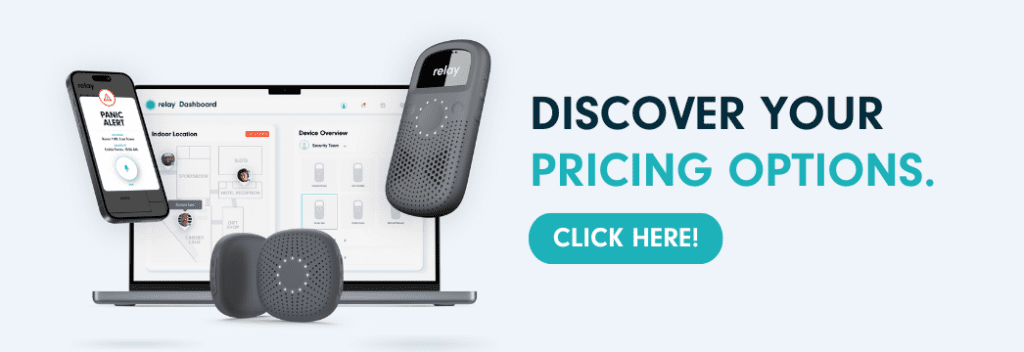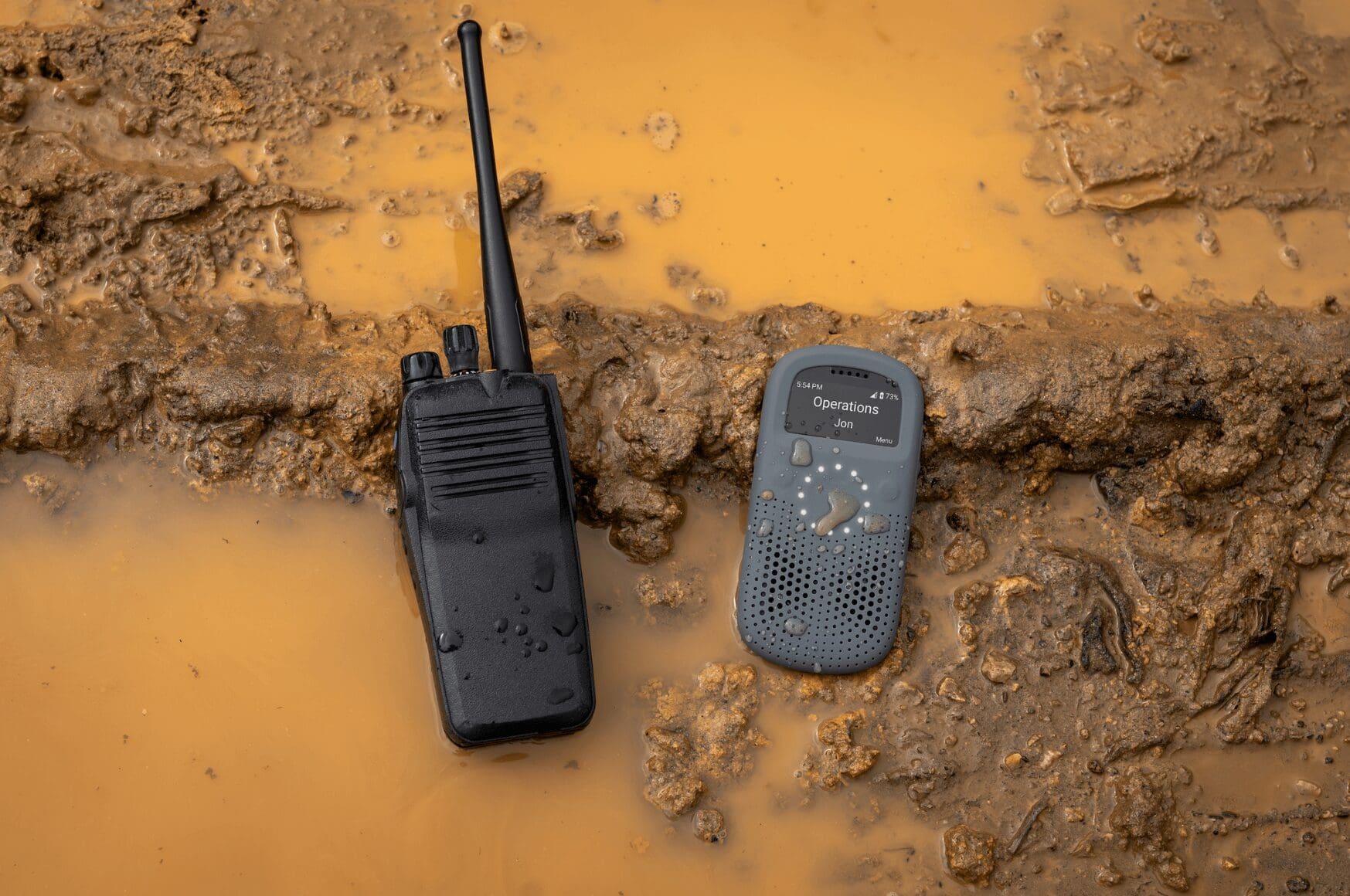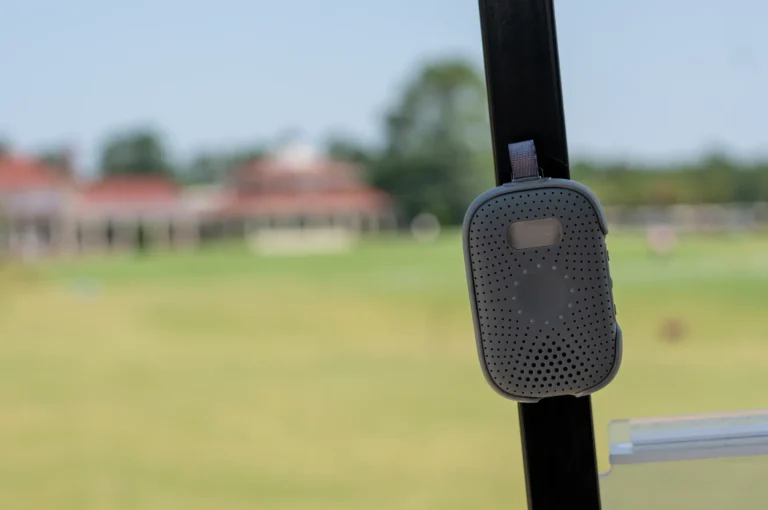Staying in touch while you’re working should be relatively easy. Unfortunately, various obstacles can stand in the way, from technological limitations to the unique needs of different work environments. Whether you’re in an office setting, a manufacturing plant, or out in the field, finding the right communication tool for your team is crucial for productivity and efficiency.
In this list of walkie talkie alternatives, we’ll examine the pros and cons of various options, including cellphones, smart radios, PTT devices, and software solutions like Microsoft Teams and Slack. We’ll also consider factors like cost, ease of use, security, and specific features such as language translation and AI capabilities. By the end, you’ll have a clearer understanding of which communication tools best suit your team’s needs and how to overcome those communication hurdles.
6 Walkie Talkies Alternatives
One thing is for sure; there is no shortage of workplace communication tools. Of course, having tools available and being able to actually use them are two different things. Let’s find out which walkie talkie alternative works best.
1. Cellphones
Cellphones definitely have a big advantage in that almost everyone has one in their pocket. These smart devices make it simple to fire off a quick text. Alternatively, you could call a coworker if you have a question.
On the downside, not everyone wants to use their personal phone for work and providing phones can be very expensive, both upfront and monthly. Cellphones also rely on only one cellular provider and if connectivity is lacking in your work environment, calls and messages may get delayed. There are also other downsides to using cellphones for work, including them being a distraction, looking unprofessional, and their lack of durability.
Pros:
- Easy to use
- 1:1 communications
- Nationwide range
- Better mobility
Cons:
- Can hinder productivity
- Security risks
- Privacy concerns
- Expensive to provide
- Reduced work-life balance
2. Smart Radios
Smart radios can be a wise alternative to walkie talkie technology. One of the main perks of adopting smart radios is that your team can talk on the top private LTE networks and WiFi rather than relying on radio waves. In other words, no one outside of your network will be able to interrupt your workforce and you’ll get nationwide range. Additionally, smart radios are better suited for harsh environments than cell phones, and you won’t have to worry about your team using them for personal uses.
With smart radios, you also unlock a fleet of capabilities that don’t come with traditional walkie talkies, such as 1:1 calling, real-time language translation, a built-in panic button, GPS tracking, message transcriptions, and more. Of course, you may have a higher initial investment, though this is often offset over time with the warranty and trade-in programs smart radio providers like Relay offer.
Pros:
- All-in-one communications and safety device
- Redundant nationwide connectivity
- Easy to use
- Built for tough environments
- 1:1 and group communications
- Customizable cloud-based features such as AI-powered language translation
Cons:
- Initial investment cost
- Workers may experience radio fatigue

3. Slack or Microsoft Teams
Slack or Microsoft Teams can be good choices for coworkers who want to remain in constant contact with each other, but this walkie talkie alternative is best for an office setting. In other words, if your business is an office environment, they will work fine for non-urgent real-time communications. However, if you run a manufacturing plant, it will be too difficult for your line workers to stay up to date.
The downsides of choosing Slack or Microsoft Teams include lots of potential distractions and information overload. They also come with a rather steep learning curve, and messages can easily get lost in the shuffle.
Some companies may choose to utilize these desktop messaging apps for their office staff, while providing an alternative communication method for those on the line. If you choose not to do this, everyone may need 10-15 minutes each day to check out what’s been posted.
Pros:
- Mobile accessibility
- Integrates seamlessly with other services and apps
- Remote collaborations
- Provides a centralized communication tool
- Enables voice calls and video conferencing
Cons:
- Not designed for time-sensitive communications
- Steep learning curve
- Number of groups and messages can be distracting
- Not ideal for deskless workers
4. Push-to-Talk Apps
Push-to-talk (PTT) apps allow hands-free communication. Although this is similar to the way walkie talkies work, PTT is much cheaper as it relies solely on Wi-Fi and cellular networks. Instant communication makes PTT apps an easy way to stay in touch too.
However, you’ll face many of the same issues as using cellphones to communicate. For instance, relying on a singular cellular network means you can expect occasional outages. Additionally, using PTT can drain your workers’ cellphone battery. And, of course, they’ll need a smartphone to take advantage of PTT technology.
Pros:
- Nationwide connectivity
- Compatible with multiple devices
- Cost-effective if employees are using personal devices
- Easy to use
Cons:
- Occasionally drops or delays calls
- Internet dependency
- Data usage costs
5. Collaboration Tools
Google Workspace
Google Workspace has been around since 2006. Although Google Workspace can be accessed for free, it also offers enterprise features. As an example, you could pay a fee to receive your own custom email addresses, along with unlimited storage.
Small-to-medium sized businesses will get the most out of Google Workspace, followed by freelancers and anyone who primarily works in the cloud. Using it does require the internet, though, so when you suffer an outage, you’ll be unable to access Google Workspace.
Zoom Workplace
Zoom Workplace is a recent addition to the many walkie talkie alternatives you can use. Launched in 2024, it primarily relies on AI-powered capabilities and collaboration. You can use this feature to summarize meetings, compose a chat message, etc.
On the other hand, Zoom Workplace can support large audiences for meetings and webinars. Plus, many workers are already familiar with Zoom’s features and setup, due to the pandemic.
Pros:
- Easy to use
- Scalable
- Robust integrations
- Good collaboration features
Cons:
- Not designed for deskless workers
- Requires the internet
- Paid accounts are expensive, especially with add-ons and subscriptions
- Not ideal for urgent communications
6. Company Intranet
Setting up a business-specific intranet enables your team to have secure, internal conversations. Your employees will have access to company news, documents, and resources, which they won’t have to browse the internet to find.
Unfortunately, many people still think of their company’s intranet as being clunky and difficult to use. Intranet access has come a long way from its earlier predecessors, though, so it might work great if your team works exclusively in an office environment.
Pros:
- Boosts employee engagement
- Encourages knowledge sharing
- Makes employee onboarding easier
- Improves internal communication
Cons:
- Navigation is complex
- Might cause information overload
- Not meant for urgent messages
- Time-consuming and costly
Choosing the Best Walkie Talkie Alternative
Which walkie talkie alternatives will work best for you? It really depends on what type of business you run, along with your work environment. For example, if you run an office, tools such as Microsoft Teams or Slack might be best. However, if your team isn’t tethered to desks, a push-to-talk device like a smart radio is by far the better option.
Smart radios such as those offered by Relay make it easy for your team to stay connected, even if they’re not within sight of each other. Relay enables you to speak to many people at once, or 1:1. Their smaller size is a plus, as is their built-in ability to instantly translate more than 30 languages.
Are you interested in building stronger communication between your employees? Unlock Relay’s pricing today.







